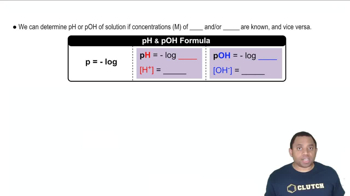Textbook Question
Lakes that have been acidified by acid rain can be neutralized by liming, the addition of limestone (CaCO3). How much limestone (in kg) is required to completely neutralize a 4.3 billion liter lake with a pH of 5.5?

 Verified step by step guidance
Verified step by step guidance


Lakes that have been acidified by acid rain can be neutralized by liming, the addition of limestone (CaCO3). How much limestone (in kg) is required to completely neutralize a 4.3 billion liter lake with a pH of 5.5?
The AIDS drug zalcitabine (also known as ddC) is a weak base with a pKb of 9.8. What percentage of the base is protonated in an aqueous zalcitabine solution containing 565 mg/L?